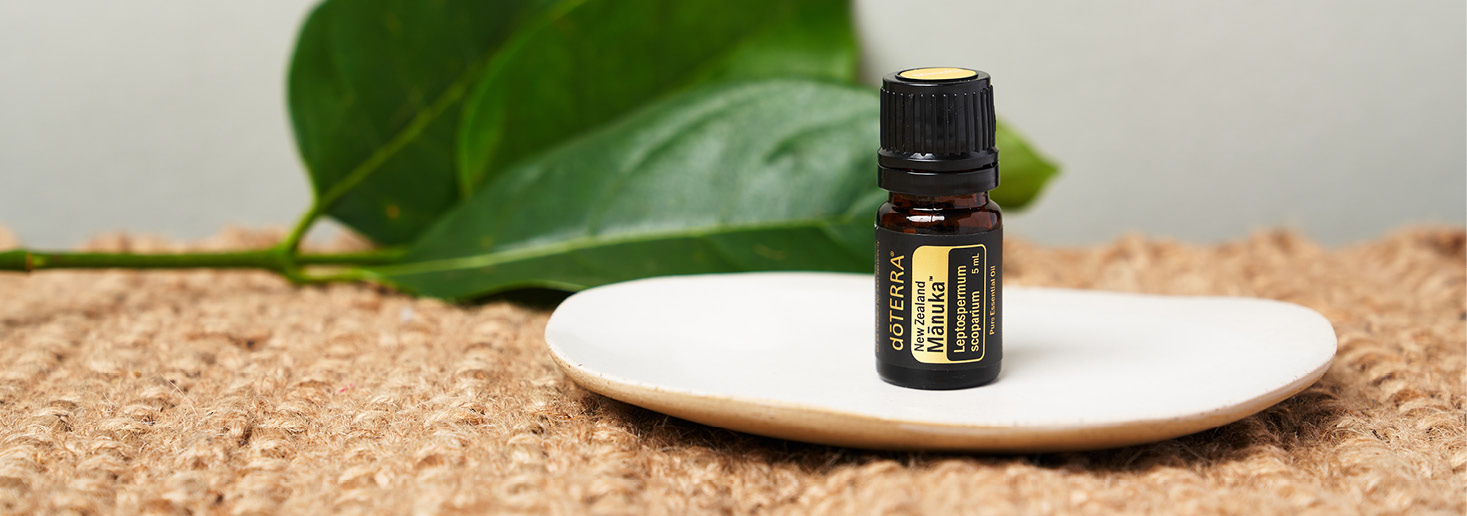Origin: a Latin derivative
meaning "Gift of the Earth."
Manuka essential oil
If you are interested in complementary medicine and superfoods, you’ve likely heard of Manuka, but chances are you don’t really know what it is. Having both been a staple of Australasian traditional health practices for hundreds of years, Manuka is often confused with its botanical cousin, Melaleuca. Furthermore, the essential oil hasn’t received as much popular culture hype as the honey it produces, but don’t underestimate the power of the volatile aromatic compounds derived from Leptospermum scoparium.
Are Manuka and Tea Tree the Same Thing?
To most of the world, “tea tree” refers to Melaleuca alternifolia, the tree that has been revered by the Australian Aborigines for centuries. But in New Zealand, Manuka (Leptospermum scoparium) has historically been given this moniker because early New Zealand settlers made tea from its fragrant leaves. The trees are native to the same area of the world and are members of the same botanical family, but that is where the similarities end. The essential oils extracted from each tree have distinct chemical compositions and their own unique properties.
What’s the Difference between Manuka Essential Oil and Manuka Honey?
Although they come from the same New Zealand native shrub (Leptospermum scoparium) and are both highly valued for their health benefits, Manuka honey and Manuka essential oil are two very different substances, with completely different chemical compositions and well-being supporting properties. Manuka honey is extracted from the flowers by European honey bees, while the highly concentrated essential oil is steam distilled from the leaves, seeds, bark, and gum. While the list of purported benefits for consuming Manuka honey, or applying it topically, is long, the research hasn’t yet caught up. Although lesser known, the volatile aromatic compounds extracted from the Manuka tree have undergone quite a bit of scientific investigation, and with fantastic results.







